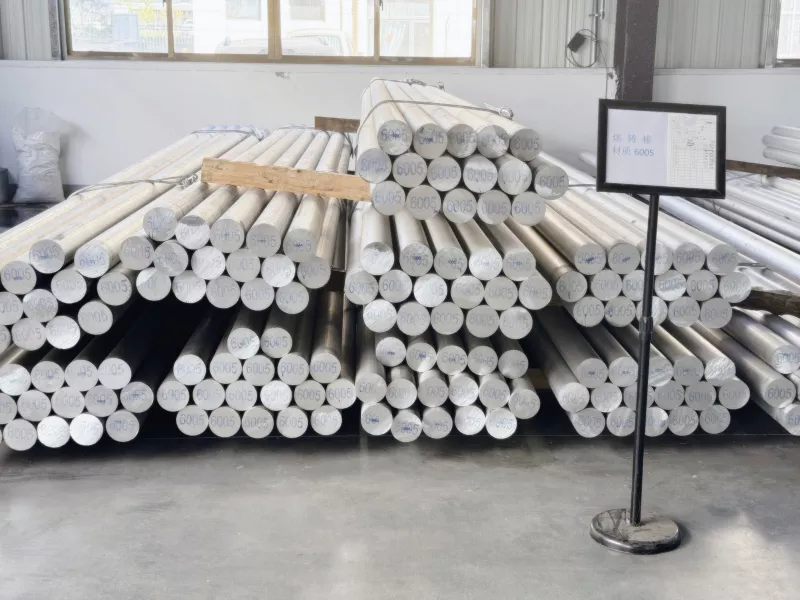최근 몇 년 동안 뱀 모양 냉각 튜브 는 특히 전기 자동차(EV) 산업에서 크게 성장했습니다. 이 튜브는 배터리 팩의 열 관리에서 중요한 역할을 하며 리튬 이온 배터리가 최적의 온도를 유지하여 과열을 방지하고 성능을 향상시킵니다. 그렇다면 이 필수 부품은 정확히 어떻게 만들어질까요? 뱀 모양의 튜브의 여정은 수 세기에 걸쳐 개선되어 온 첨단 기술인 알루미늄 압출 공정에서 시작됩니다.
뱀 모양 냉각 튜브에 사용되는 알루미늄 프로파일을 포함한 알루미늄 프로파일의 제조는 몇 가지 주요 단계로 구성됩니다. 프로세스는 다음과 같이 시작됩니다. 수축률 조정. 각 압출기에는 공정 중에 알루미늄이 수축하는 정도에 영향을 미치는 고유한 특성이 있습니다. 이 단계에서는 기계의 톤수와 사용되는 장비 브랜드에 따라 정밀한 보정 및 테스트가 필요합니다.
다음 단계는 다음과 같습니다. 알루미늄 가열 및 슬라이스. 일반적으로 알루미늄의 둥근 막대인 3시리즈 또는 6시리즈 소재를 용광로를 사용하여 고온으로 가열합니다. 가열로 인해 금속이 부드러워져 가단성이 향상되고 압출 준비가 완료됩니다. 가열이 완료되면 알루미늄 바는 압출기에 적합한 작은 섹션으로 절단됩니다.

그런 다음 슬라이스된 알루미늄 바를 압출기로 옮기고 전송기. 이를 통해 자료가 지연이나 비효율성 없이 다음 단계로 원활하게 이동할 수 있습니다.
그리고 압출 프로세스 는 1797년 조셉 브라마가 연성 금속 파이프 제조에 대한 최초의 특허를 취득한 이래로 오랜 역사를 가지고 있습니다. 수년에 걸쳐 이 공정은 다음과 같은 현대적인 애플리케이션에 맞게 조정되고 개선되어 왔습니다. 압출 알루미늄 프로파일 건설에서 전기 자동차에 이르는 다양한 산업에 사용됩니다. 유압 프레스를 사용하면 다음과 같은 제품을 만드는 데 필수적인 복잡한 형상을 고정밀로 압출할 수 있어 공정이 혁신적으로 개선되었습니다. 배터리 냉각 튜브.
알루미늄을 슬라이스한 후에는 압출 기계로 효율적으로 이송해야 합니다. 이를 위해 컨베이어 시스템를 사용하여 재료가 원활하고 중단 없이 움직일 수 있도록 합니다. 알루미늄은 압출기에 들어가기 전에 준비되고 올바르게 배치되어 최종 프로파일로 성형됩니다.
알루미늄 압출은 사문석 튜브를 만드는 데 있어 핵심적인 부분입니다. 재료가 압출기에 들어가면 다시 가열되어 용융 상태가 됩니다. 엄청난 압력 하에서 용융된 알루미늄은 최종 제품의 단면 모양을 결정하는 특수 도구인 다이를 통해 강제로 압출됩니다. 이 경우 다이는 배터리 냉각 애플리케이션에 필요한 독특한 뱀 모양 구조를 만들도록 설계됩니다.
곧게 펴기 공정 중에 사용되는 높은 압력으로 인해 제품이 휘거나 구부러질 수 있으므로 압출 후 종종 필요합니다. A 교정기 필요한 치수 요건을 충족하도록 재료를 정렬합니다. 마지막으로 압출된 알루미늄은 컷 를 고객의 사양이나 냉각 튜브의 용도에 따라 원하는 길이로 조정할 수 있습니다.

알루미늄 압출에 사용되는 원재료의 품질은 매우 중요합니다. 알루미늄 원형 바에서 일반적으로 3시리즈 또는 6시리즈 소재속성에 따라 선택됩니다. 3 시리즈 알루미늄 는 압출 과정에서 불순물이 발생하기 쉬우므로 최종 제품에 구멍과 같은 결함이 발생할 수 있습니다. 6 시리즈 알루미늄반면에 더 안정적이고 작업하기 쉬워 더 나은 성형 및 압출 결과를 얻을 수 있습니다.
품질을 더욱 향상시키기 위해, 스트리핑 머신 는 압출 공정에 들어가기 전에 알루미늄 바의 표면 불순물을 제거하는 데 사용할 수 있습니다. 이 단계는 다음과 같은 고성능 애플리케이션에 특히 중요합니다. EV 배터리 냉각 튜브소재에 결함이 있을 경우 장기적으로 제품 내구성에 문제가 발생할 수 있습니다.
또한 절단 과정에서 둥근 막대의 머리와 꼬리를 버려 알루미늄의 불순물을 제거하여 최고 품질의 재료만 사용할 수 있습니다.
압출 시 사용되는 금형 또는 다이는 공정의 성공을 결정하는 가장 중요한 요소 중 하나입니다. 이러한 금형은 고객의 특정 요구 사항을 충족하기 위해 엄격한 공차와 복잡한 구조로 각 애플리케이션에 맞게 맞춤 제작됩니다.

배터리 냉각 튜브와 같은 제품의 경우, 금형은 전기차 배터리의 효율적인 열 관리를 위해 복잡한 뱀 모양을 만들 수 있도록 세심하게 설계되어야 합니다.
전기차 배터리는 과열로 인해 배터리 수명이 단축되고 성능 문제가 발생할 수 있으므로 열 관리가 매우 중요합니다. 압출 알루미늄으로 제작된 사선형 냉각 튜브는 열 관리를 위한 효율적인 솔루션을 제공합니다. 사선형 디자인은 배터리 팩 전체에 냉각수를 최적으로 흐르게 하여 각 셀이 이상적인 온도를 유지할 수 있도록 합니다.
액체 냉각 파이프의 사용은 안전과 효율성 모두를 위해 배터리 온도를 일정하게 유지하는 것이 필수적인 고성능 전기 자동차에 특히 효과적입니다. 알루미늄은 열 전도성이 뛰어나 이러한 냉각 시스템에 적합한 소재입니다.
알루미늄은 경량 특성과 열 전도성의 독특한 조합을 제공하여 다음과 같은 용도에 완벽한 소재입니다. EV 배터리 냉각 튜브. 열을 빠르게 방출하는 기능 덕분에 급가속이나 장시간 주행과 같이 전력 수요가 많은 상황에서도 배터리 팩이 시원함을 유지합니다.
또한 압출 알루미늄은 맞춤형 제작이 가능하여 제조업체가 효율적인 열 관리에 필수적인 뱀 모양 튜브와 같은 복잡한 모양을 만들 수 있습니다.
뱀 모양 냉각 튜브의 기원은 정교한 알루미늄 압출 공정에 있으며, 전기 자동차와 같은 산업의 증가하는 수요를 충족하기 위해 시간이 지남에 따라 완성되었습니다. 제조업체는 첨단 기술과 고품질 소재를 결합하여 전기차 배터리 팩의 안전성과 효율성을 보장하는 배터리 냉각 튜브를 생산할 수 있습니다.
앞으로 전기 자동차가 계속 발전함에 따라 열 관리 시스템에서 알루미늄 압출의 역할은 더욱 중요해질 것입니다. 이 공정의 복잡성을 이해하면 구매자와 엔지니어가 제품용 냉각 솔루션을 선택할 때 정보에 입각한 결정을 내리는 데 도움이 됩니다.

저는 5년 넘게 배터리 열 관리 분야에서 일하면서 수많은 국제 프로젝트를 처리했습니다. 배터리 액체 냉각 제품이나 서비스에 대해 궁금한 점이 있으면 언제든지 문의해 주세요!